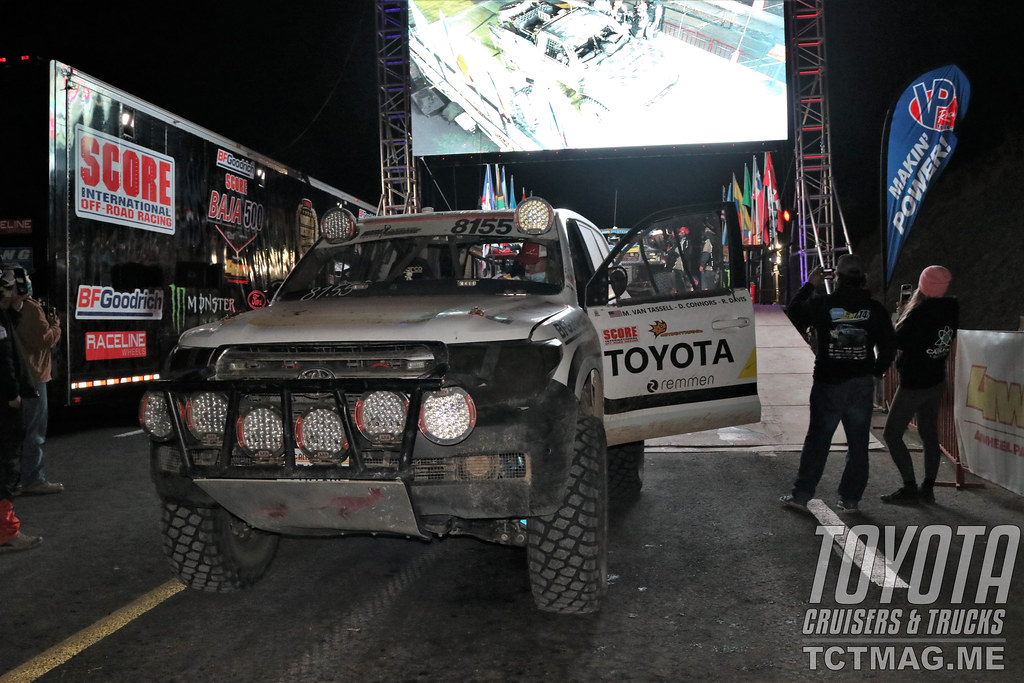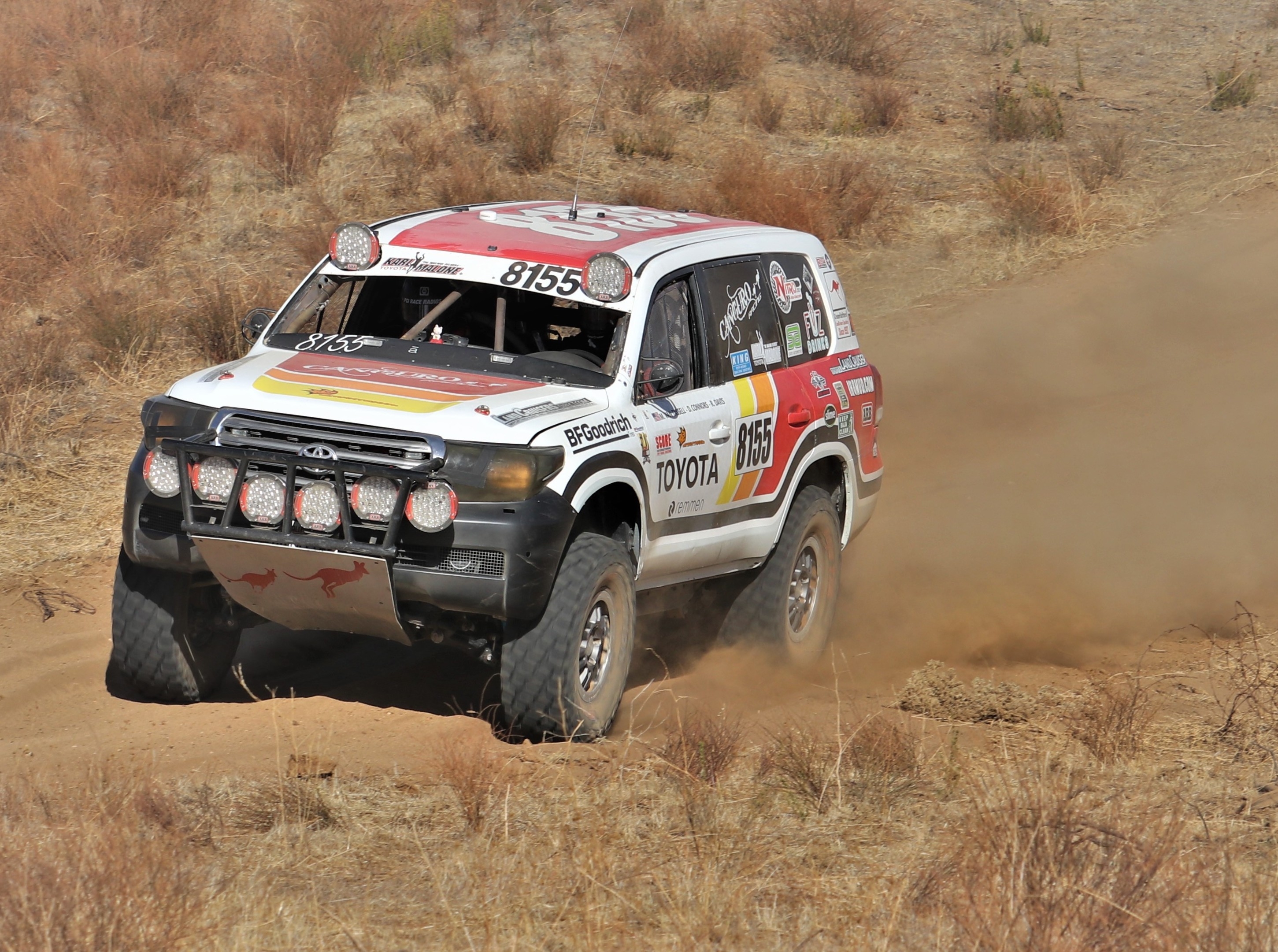That's why I was so excited to chat with Daniel Markofsky, one of TCT's longest serving editors, and a six-time Baja 1000 Chaser, about his experience this year chasing for Canguro Racing once again. Let’s start by setting the stage.

Who is Canguro Racing?
From their website:
Canguro Racing formed somewhere in the mountains of Northern Utah. Or maybe amongst the cactus and beaches of Baja, Mexico. It might just have happened on the slickrock mesas of Moab. The truth is that there is no exact date when Canguro Racing was created. Over 20 years ago we were complete strangers, however through a shared love of the venerable Toyota Land Cruiser we all became friends.
Each of us has been active in the off-roading community for over 15 years, traveled thousands of dusty, washboard miles and have served in local and national leadership positions for various volunteer organizations. What started as a goal to race the Baja 1000 has turned into passion for racing and a desire to get better and faster. 8 years after our first race we are still loving the adventure and see no signs of change.
The Race Truck is a 2010 200 Series Toyota Land Cruiser ... “Monica”
Engine Toyota 3UR-FE 5.7 liter V8
Exhaust Dual Flowmaster high flow mufflers
Air Filtration AEM dryflow filter with custom intake routed into passenger compartment
Transmission Stock Toyota AB60F six speed automatic with custom “one off” paddle shifter
Transfer Case Stock Toyota
Differentials Stock differentials with Nitro Gear and Axle 4.88:1 gear ratio; open front differential, ARB Air Locker rear differential
Fuel Tank 46 gallon fuel cell with backup redundant fuel pump
Front Suspension Custom tuned King Kong 3.5” triple bypass shocks with 2.5” King Coil-overs
Rear Suspension Custom tuned King Kong 4.5” triple bypass shocks with 2.5” King Coil-overs
Steering Stock Toyota rack and pinion, with external oil cooler
Brakes Custom CNC dual master cylinders, adjustable proportioning valve, Remmen high performance brake pads and rotors; stock OEM Toyota calipers
Tires 37×12.50R17 BFGoodrich Baja T/A KR2 on TRD forged wheels
Charging & Starting Dual batteries with stock Toyota 175 amp alternator; stock Toyota push button start
Lighting 8 ARB Intensity Solis LED driving lights producing a combined 76,368 effective and 145,424 raw lumens
Communication PCI race intercom with Kenwood 150 watt race radio
Navigation Lowrance HD7 GPS
System Monitoring Full complement of pressure and temperature gauges and a Scanguage II to keep track of live engine data
Climate Control A/C & heating removed from truck; dual parker pumper fresh air systems
Seats Sparco EVO III seats with Crow Enterprizes 5-point harness
Roll Cage Geiser Bros built roll cage with integrated engine and passenger protection

Canguro Racing members:
Will Carroll
Darren Webster
Dave Connors
Marc Van Tassell
Kurt Williams
Bryan “Bub” Meenan
Ryan Davis
Ryan Nakaya
Related Articles
The Chase Trucks:
Chase 1: 2019 Tundra, Ryan Davis, Canguro Racing
Chase 2: 2016 200 Series Land Cruiser, Dave Connors, Canguro Racing
Chase 3: 2008 200 Series Land Cruiser, Kurt Williams, Cruiser Outfitters + Canguro Racing
Chase 4: 2008 Chevy Duramax (Was out of commission for the race. Diesels do not run on petrol.)
Chase 5: 2017 Tundra, Paul May, Equipt Expedition Outfitters
Chase 6: 1993 80 Series LC, Daniel Markofsky, TCT Magazine

How did the race go for Chase #6?
The number 1 rule when chasing is “Safety” followed closely by “Team First”. So whatever the team needs, that's the main job. This includes things like grocery runs, spare parts carrying, rescue and recovery, field maintenance, and of course, taco runs. Tacos are very important in Baja.
Basically, the chase crew in each truck can be thought of as a mobile pit crew. While the 898.40 mile course winds its way around and across the Baja peninsula, the chase trucks take the highway (and sometimes dirt roads - which may be the only road) to get ahead of the race truck. Chase teams leapfrog each other to specific areas to setup pit stops. These assignments can, and often do, change at the last minute, because, Baja.
At most pit stops there are two to five chase trucks, depending on the pre-planned tasks plus any last-minute changes. Activities at each stop can include driver change, fuel filling, maintenance, chassis bolt checking, and taco eating. Each person from each chase truck has a specific task, so we swarm the race truck to get everything done.
Our crews are not NASCAR fast, yet they are surprisingly quick at getting it done and the race truck back on the course as quickly as possible. The goal is to support the Baja saying “slow is fast.” The only thing more important than winning the race is finishing it.
Prior to the race, Dave Connors puts together a detailed chase plan. This plan is delivered to everyone to study before they leave for Baja, and the night before the race begins, the entire team and chase crews go through it in great detail. Part of the preparation includes loading all Baja 1000 tracks and waypoints into multiple GPS systems, so all team members have all the info they need when out in the desert.
There are other ways Baja teams can manage their pit stops. Baja pits and BFG pits. Both are paid services. These pits include fuel and repair services and can come in very useful. For Canguro Racing, the BFG pit is added as a backup plan, which came in very handy this year. There was a captured nut under the Land Cruiser that broke loose. While it was still holding, it was moving and could have ended the race for Canguro. The race truck stopped at one of the BFG pits, they welded the flanged bolt in about 60 seconds, and the truck was back on the course. The drivers didn't even have to get out.
When a chase crew has completed our task, we usually have a little time to kill before the next assignment. This could be anywhere from an hour to more than five hours. During this time we're enroute to our next area, sometimes stopping along or near the course at specific areas to monitor the radios. This is to ensure the race truck has plenty of communications coverage in case there is a maintenance issue or other emergencies. It's also great to for the drivers (who generally drive in 12-hour shifts) to hear that the chase crew is standing by, even when everything is running smoothly.
So, what do we do when the race truck runs into a problem while on the course? We got to find out this year right after completing one of our assignments.
We headed deep into the hills along a narrow, twisty dirt road, and found a wide place to pull over and get some rest. Somehow, I managed to fall asleep despite the three packs of coyotes and scorpions all around. Yes, I sleep outside on a pad on top of a blanket outside the truck, right next to all the creepy crawlies.
We figured that we had about 90 minutes before the race truck arrived so some rest would be very welcome. We were near the course, so we could see race car lights dipping up and down across the hills. Eventually we heard the race truck check in, then managed to get another hour or so of sleep.
Once we got going again, we headed back toward the main highway and back into cell service. That's when we heard that the race truck managed to get stuck frame-deep in Baja Silt. (See below: What is Baja Silt?)
So we started to figure out how any of the chase trucks could get to the race truck. The only way to approach is to find a racecourse entry point behind the race truck, since it's illegal to drive against the race flow (and grounds for immediate disqualification). It is quite dangerous for a chase truck to drive on the course, since a trophy truck could come up from behind at high velocity, in the middle of the night, with low visibility.
Chase 6 continued toward our next objective since there wasn't anything we could do to help the race truck, leaving cell service behind. Our next stop was Valle De Trinidad, in the heart of Baja California. Luckily by the time we got to town and met up with another chase truck, we found out that the race truck had dug themselves out of the silt. So instead of continuing to San Felipe, we would pace the race truck on the next section of the course, which was actually on the public highway.
During each Baja 1000 race there are sections on public highways. This year there were 106 miles. This is both a treat and a problem for the race drivers. It's nice to not have to worry about bouncing around and breaking something for a few miles, but the smooth highway can result in fatigue setting in hard, so a chase truck gets to work. We drive in front of the race truck to keep them under the posted speed limit and talk to them on the radio to keep their minds active. This time we paced Monica for about 30 miles into Pit Stop #3.
At that stop we did a driver change as well as some of the other tasks that we normally take care of. The plan was for Dave Connors to take over driving, and for Darren Webster to move over to the Nav seat. Well, after spending two hours digging the truck out of the silt, Darren was completely exhausted, so Bub hopped into the race truck as Navigator. This was at race mile 440, and our next assignment was to listen to the radio for any issues at RM 460, which we did, then we headed to San Felipe for breakfast.
Our next assignment wasn't until race mile 645, which was in nearly the same spot since the course was making a loop. With almost 200 miles of race before our next task (which is over 5 hours at about 30MPH average speed for the race truck) we headed for the beach to find some shade under palm trees, for a nice nap.
The Big Finish
Our final assignment of the race was monitoring radios, about 25 miles from the start/finish line. This last section is pretty fast, so by the time we got moving again and made it to the finish, the truck had already crossed the line. The only other truck in Stock Full did not finish (DNF). While the Canguro Land Cruiser came in overall 95th of 99 finishers, the team won the Stock Full class. At the Baja 1000, finishing the race is winning, but it is even better when you also win your class.

What we really love most about TCT’s Baja 1000 coverage over the years is that nearly every truck the stock class. The FJ Cruiser racers from 10 years ago, the winning Tundra in 2014, and Canguro’s Land Cruiser which has been raced in Baja for nearly a decade.
Also....What is Baja 1000 Silt?
It's hard to describe if you've never seen it, but imagine something slightly thicker than talcum powder, but the same consistency. It is so fine that it almost flows like water, but it's a dry dust. It's like walking in muck near a lake that can suck your shoe right off. The silt can be ankle to waist deep, and once it's disturbed it hangs in the air for hours.
[flickr set=72157718768882351]
To get your copy of the
Fall 2020 Issue:
Follow us on Facebook, Twitter, and Instagram to get up-to-date industry news, events, and of course, amazing adventures, stories, and photos!












